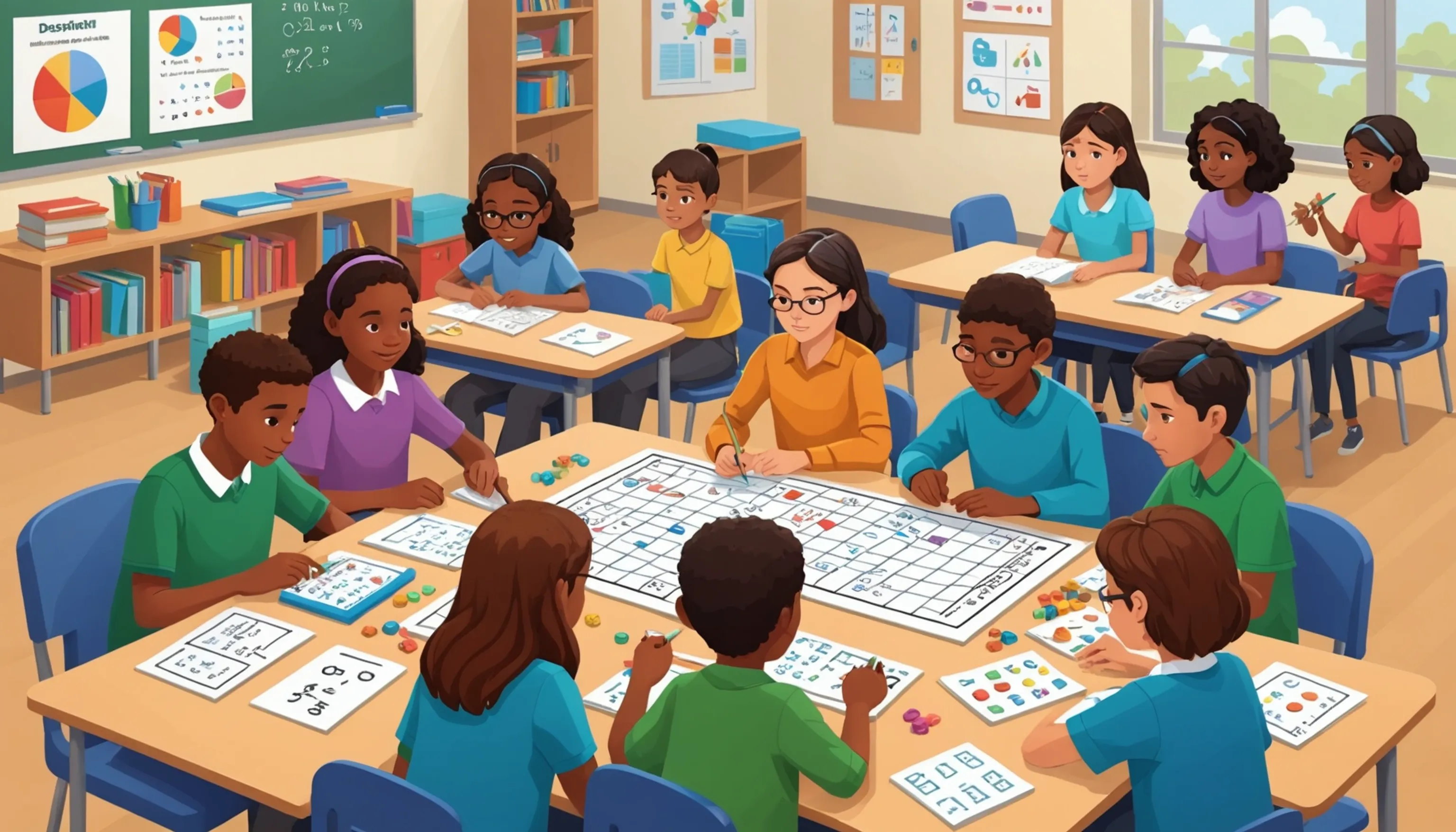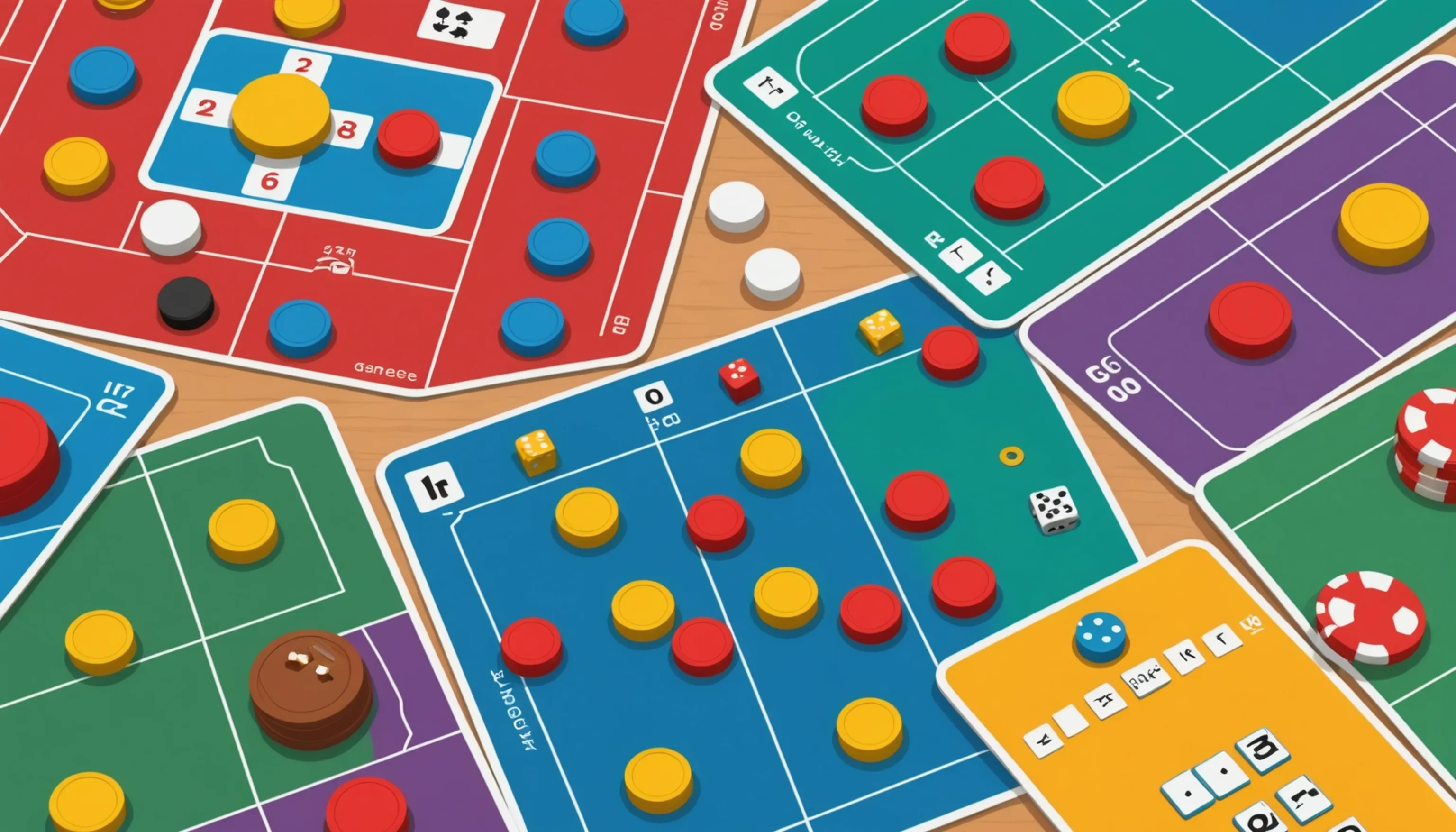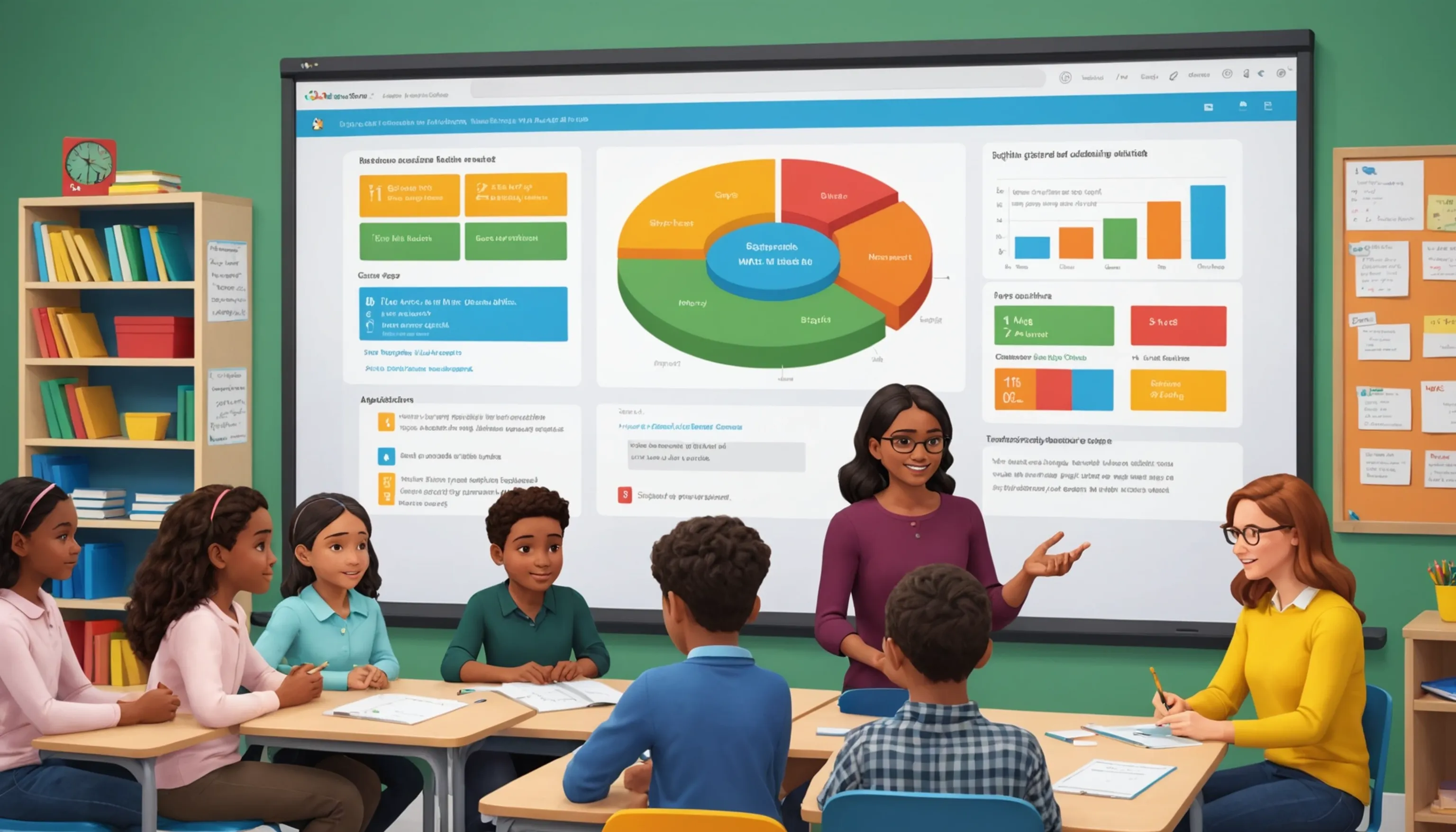Integrating Games into Math Lessons Effectively
 HvWHenry van Wagenberg
HvWHenry van Wagenberg
Integrating Games into Math Lessons: A Complete Guide
Integrating games into math lessons is a powerful approach to enhance student engagement and understanding. By incorporating interactive elements, teachers can transform traditional math concepts into enjoyable activities. Games not only make learning fun but also promote critical thinking and problem-solving skills.
Through games, students can practice math skills in a low-pressure environment, allowing for a deeper understanding of the material. Additionally, this method caters to various learning styles, making it inclusive for all students. Ultimately, integrating games into math education helps create a dynamic and effective learning experience.
Benefits of Using Games in Math Education
Utilizing games in math education offers numerous benefits that enhance the learning experience for students. Here are some key advantages:
- Increased Engagement: Games capture students' attention and motivate them to participate actively. This engagement helps maintain interest in math, particularly for those who may find the subject challenging.
- Enhanced Problem-Solving Skills: Many math games require strategic thinking and problem-solving, allowing students to develop these crucial skills in a fun context. As they tackle challenges, they learn to approach problems from different angles.
- Improved Retention: Learning through play can lead to better retention of math concepts. When students engage with material in an enjoyable way, they are more likely to remember the information long-term.
- Collaboration and Communication: Many games encourage teamwork, fostering collaboration among students. Working together to achieve a common goal helps develop communication skills and social interaction.
- Differentiated Learning: Games can be tailored to meet diverse learning needs. Whether students require extra support or are ready for advanced challenges, games can be adjusted accordingly.
Ultimately, incorporating games into math lessons not only makes learning more enjoyable but also cultivates a positive attitude towards math. By embracing this innovative approach, educators can create a supportive environment that encourages exploration and growth in mathematical understanding.

Types of Games Suitable for Math Lessons
When it comes to incorporating games into math lessons, a variety of types can be effectively utilized to enhance learning. Here are some popular game categories suitable for math education:
- Board Games: Traditional board games like Monopoly or specialized math board games can introduce concepts like addition, subtraction, and probability. These games often involve strategic thinking and can be adapted to various grade levels.
- Card Games: Card games such as Math War or Uno can be great tools for practicing arithmetic operations. By using a standard deck of cards, teachers can create engaging games that reinforce number recognition and calculations.
- Online Games: Digital platforms offer a plethora of interactive math games that cater to different skill levels. Websites and apps like Khan Academy or Prodigy allow students to practice math concepts in a fun, gamified environment.
- Puzzles and Logic Games: Sudoku, logic puzzles, and brain teasers challenge students to think critically and apply mathematical reasoning. These games encourage problem-solving and can be a fun way to develop logical thinking skills.
- Role-Playing Games: Incorporating math into role-playing scenarios allows students to apply mathematical concepts in real-world contexts. For example, students can manage a budget for a class project or plan a mock event, utilizing math in practical situations.
By incorporating a mix of these game types into math lessons, educators can create a dynamic and engaging learning environment that caters to diverse learning styles.
How to Choose the Right Games for Your Curriculum
Choosing the right games for your math curriculum involves several key considerations. First, identify the learning objectives you want to achieve. Ensure that the games align with the specific concepts you’re teaching, whether it’s addition, subtraction, or geometry. Next, consider the age and skill level of your students; select games that are appropriate for their developmental stage. Look for games that promote engagement and collaboration, as these foster a positive learning environment. Lastly, gather feedback from students to understand which games resonate with them, allowing for an adaptable and effective curriculum.

Aligning Games with Learning Objectives
Aligning games with learning objectives is crucial for effective math education. To ensure that games contribute to student learning, follow these essential steps:
- Identify Key Learning Objectives: Start by defining the specific skills or concepts you want your students to master. These could range from basic arithmetic to more complex topics like algebra or geometry.
- Evaluate Game Content: Once you have your objectives, assess potential games for their content. Each game should clearly address the targeted learning goals. For instance, if your objective is to improve fraction skills, choose games that incorporate fraction operations in their mechanics.
- Consider Skill Levels: Ensure that the games are appropriate for the varying skill levels of your students. A game should challenge students without being overly frustrating. Adjustments can be made to the rules or objectives to better suit different learners.
- Integrate Assessment: Use games as a form of assessment to gauge student understanding. For example, after playing a math game, ask students to explain their strategies or the concepts they applied during play. This reflection helps solidify their learning.
- Gather Feedback: After implementing games in your lessons, solicit feedback from students. Understanding their perceptions can help you refine your choices and improve the alignment of games with your learning objectives.
By strategically aligning games with learning objectives, educators can create a more impactful and engaging math learning experience for students.
Incorporating Technology in Math Games
Incorporating technology in math games can significantly enhance the learning experience for students. With the rise of digital tools and platforms, educators have access to a wide variety of interactive games that cater to different learning styles and preferences. Here are some effective ways to integrate technology into math education:
- Online Math Platforms: Websites such as Khan Academy and Prodigy offer engaging math games that adapt to each student's skill level. These platforms provide instant feedback, allowing students to learn at their own pace while tracking their progress.
- Educational Apps: Mobile applications designed for math education can be used in the classroom or at home. Games like Math Bingo or Mathletics make learning fun and interactive, encouraging students to practice essential skills outside of traditional settings.
- Interactive Whiteboards: Use interactive whiteboards to display math games during lessons. This technology allows for collaborative play, where students can participate in solving problems as a group, fostering teamwork and communication.
- Virtual Reality (VR): Explore the use of VR games that immerse students in mathematical concepts. VR can provide unique experiences, such as visualizing geometric shapes or simulating real-world scenarios where math is applied.
- Gamification Elements: Incorporate elements of gamification, such as rewards, badges, and leaderboards, into your technology-based games. This approach motivates students to engage more deeply with the material while fostering a sense of accomplishment.
By effectively incorporating technology into math games, educators can create a dynamic and interactive learning environment that enhances student understanding and enthusiasm for mathematics.
Tips for Effective Game-Based Learning
Implementing game-based learning effectively requires careful planning and execution. Here are some tips to enhance the experience:
- Set Clear Objectives: Define what you want students to learn through the games.
- Choose Appropriate Games: Select games that align with your curriculum and cater to various learning styles.
- Encourage Collaboration: Foster teamwork by incorporating group activities, allowing students to learn from each other.
- Provide Feedback: Offer constructive feedback during and after the game to reinforce learning.
- Reflect on Learning: Allow time for students to discuss strategies and concepts learned during gameplay.
Creating a Positive Learning Environment
Creating a positive learning environment is essential for effective game-based learning in mathematics. A supportive atmosphere encourages student engagement and fosters a love for learning. Here are key strategies to cultivate such an environment:
- Build Relationships: Establish strong relationships with your students to create trust and respect. Take time to understand their interests, strengths, and challenges. This connection helps students feel valued and more willing to participate.
- Encourage Open Communication: Promote an open dialogue where students feel comfortable expressing their thoughts and questions. Encourage them to share their ideas about the games and their learning experiences.
- Set Clear Expectations: Clearly outline the rules and objectives of the games. Ensure students understand what is expected of them regarding behavior, teamwork, and learning outcomes.
- Celebrate Efforts and Achievements: Acknowledge and celebrate both small and large achievements. Use positive reinforcement to motivate students, whether through verbal praise, certificates, or rewards for their efforts in gameplay.
- Create a Safe Space for Mistakes: Emphasize that making mistakes is part of the learning process. Encourage students to view errors as opportunities for growth, fostering a growth mindset.
- Incorporate Variety: Use diverse games and activities to cater to different learning styles and preferences. This variety keeps students engaged and excited about learning math.
By implementing these strategies, educators can create a vibrant and inclusive learning environment that enhances the effectiveness of game-based learning in math education.
Encouraging Collaboration Among Students
Encouraging collaboration among students is vital for maximizing the benefits of game-based learning in math education. Collaborative learning not only enhances understanding but also fosters essential social skills. Here are effective strategies to promote collaboration:
- Group Dynamics: Organize students into small, diverse groups to encourage teamwork. Mixing different skill levels allows students to learn from one another and helps build a sense of community.
- Assign Roles: Assign specific roles within each group, such as leader, recorder, or presenter. This structure encourages active participation and accountability, ensuring that each student contributes to the group’s success.
- Use Cooperative Games: Select games that require teamwork and collaboration to win. Games that emphasize collective problem-solving, like escape room challenges or scavenger hunts, encourage students to communicate effectively and strategize together.
- Set Collaborative Goals: Establish common objectives for the group to achieve during gameplay. This shared purpose motivates students to work together and fosters a sense of achievement when they reach their goals.
- Encourage Peer Teaching: Allow students to explain concepts to one another. Peer teaching reinforces their understanding and builds confidence, as they articulate their thought processes to their classmates.
- Reflect on Group Work: After gameplay, facilitate discussions where students can reflect on their teamwork experiences. Encourage them to share what worked well and what challenges they faced, promoting continuous improvement.
By implementing these strategies, educators can create a collaborative learning environment that enriches the educational experience and strengthens students' mathematical skills.
